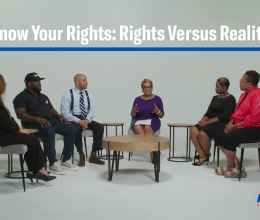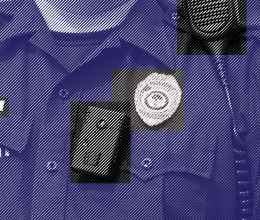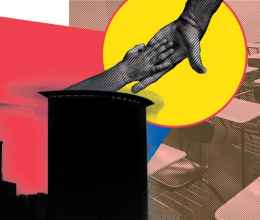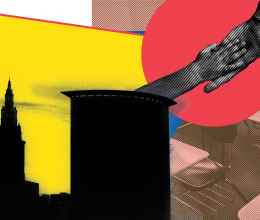School provides youth with the necessary skills to develop and mature into adults and citizens, or so we’ve been told by our parents as soon as we were old enough to attend.
Unfortunately, school administrators have hindered this mission by inappropriately disciplining students for nonviolent behavior. Instead of allowing students to remain in school while learning from their mistakes, schools far too often suspend students.
Discipline Disparities
These students feel victimized as they are behind in schoolwork and stigmatized by their peers and teachers. Many drop out and fall prey to criminal activity or the prejudices of law enforcement. The school-to-prison pipeline is a common story for many African-American students, who are disproportionately punished over their white peers, maintaining the systemic oppression of black people in the United States.
According to a report from the University of California, Los Angeles, Ohio has one of the greatest disparities in suspension rates between black and white students in the nation. In high schools, 6 percent of white students compared to 27 percent of black students are suspended.
Read our School to Prison Pipeline Civil Liberties Briefing.
If you want to learn more about injustices in schools, read "Zero Tolerance Makes Zero Sense."
Moreover, Ohio schools have a higher dropout rate among African Americans. In the 2011-2012 school year, 86 percent of white students versus 61 percent black students graduated from high school. Dropping out leads to an increase in the probability that students will end up in jail. It’s certainly true that African Americans are over represented in Ohio prisons and jails when compared to the general populations. When black youth are disproportionately punished in schools, it can lead to high rates of incarceration as adults.
A Better Alternative
Restorative justice is an effective disciplinary action that could potentially end the school-to-prison pipeline. It’s being successfully implemented in a variety of school districts across the country to replace out-of-school suspensions and expulsions.
This alternative discipline program allows students to share and discuss how to deal with conflict in a calm and safe environment. As a community-oriented practice, it allows for students to develop the skills for conflict solving and communication. Although some may believe that restorative justice is more lenient than punitive discipline, it’s actually very difficult for students to confront their mistakes and take the necessary means to fix any problems they may have caused. The facilitators ask non-judgmental questions that allow for an open and effective discussion where all parties feel equally involved.
Several schools in Oakland, California, have adopted this method and have seen great results. Most schools in Oakland use a three-tiered model of prevention, intervention and supported reentry:
- Prevention attempts to create a community within the classroom by allowing students to share their thoughts and feelings in a group circle.
- Intervention occurs when facilitators mediate a conversation about a conflict.
- Supported re-entry works to help students who are coming back to school from a suspension or expulsion.
As a result of this model, Bunche High School has seen suspensions drop by half and students have stopped cutting class and are more focused on their school work.
Restorative justice is a method that provides encouragement and support for all students, regardless of their past. They feel safer and more respected in school, and they learn how to correctly deal with their behavioral problems.
The solution to the school-to-prison pipeline is clear. Integrate restorative justice in Ohio schools, so that all students—regardless of race or past behavioral problems—will be treated as equals.
Lauren Hawkes is an intern at the ACLU of Ohio.









